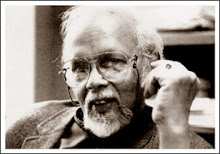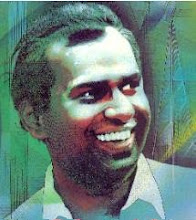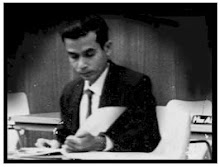 Author : W. T. A. LESLIE FERNANDO
Author : W. T. A. LESLIE FERNANDOSource: Virtual Library
Christmas is a season of joy and festivity. During Christmas many nativity plays are enacted on the Birth of Christ in a stable and incidents connected with it. There have been nativity plays in Sri Lanka from the times of the Portuguese.
It is on record that in 1615 a nativity play was performed in Kammala on the incarnation of Christ. None of the nativity plays during the Portuguese times have come down to us.
There is no evidence as to the type of drama that prevailed in the ancient past. There are some references to dramatic performances in Mahawamsa, Pujavaliya and in some other literary works. It cannot be ruled out that there were no dramas in ancient Sri Lanka.
Kolam, Sokari, Gammadu and Thovil Madu coming down from ancient times are not considered as drama in the real sense of the term. There have also been age-long puppet displays made of Kaduru wood during festivals. However, they appear to be wayside performances.
The earliest form of Sinhala drama we could speak of today is Nadagam. There is evidence that nadagam have originated in Christmas.
There is a popular belief that Sinhala Nadagam was introduced by Philippu Singho. However, the late Dr. Edmund Pieris, former Bishop of Chilaw who had done much research on the origins and development of Sinhala Nadagam shows that the first Sinhala Nadagam was Raja Tunkattuwa presented by M. S. Gabriel Fernando of Chilaw. It was based on the Birth of Christ in a stable and the worship of the divine baby by the Three Kings of Magi.
Gabriel Fernando modelled his "Raja Tunkattuwa" on the Tamil natakam "Muvrasikai Natakam" on the Birth of Christ. In 1882 this "Raja Tunkattuwa" was revised and re-cast by Juan Pinto. In the "Viyarana Viriduwa" of the "Raja Tunkattuwa" enacted by Juan Pinto it is stated that the original author of it was Gabriel Fernando of Chilaw.
According to tradition, Philippu Singho was born about the year 1770. It is said that he presented "Ehelapola Nadagama" in 1824.
"Raja Tunkattuwa" of M. S. Gabriel Fernando was first enacted in 1761. As it is "Raja Tunkattuwa" of Gabriel Fernando could be considered as the first Sinhala Nadagam.
The text of "Raja Tunkattuwa" nadagama enacted at times by the people of Duwa during the Christmas season was a subsequent innovation. It was written by Marthelis Gurunnanse.
As "Raja Tunkattuwa" was a success Mihindukulasuriya Gabriel Fernando wrote another nadagama called "Marigida Nadagama" on the life of St. Margarita. This was followed by many other Sinhala nadagams on the lives of Saints and other Catholic themes. Before long nadagams on secular themes like "Ehelapola", "Sinhavalli", "Portia" and "Mathalan" were performed in various parts of the country and nadagam became a recognised form of drama in Sri Lanka.
Nadagam is a derivation of the Tamil term "Natakam". The Jesuit priests in Jaffna presented Catholic plays coming down from the Portuguese tradition in Terukuttu style that was popular in Jaffna and Batticaloa. Terukuttu was a form of street drama that spread to Sri Lanka from South India.
The early nadagams closely followed "Terukuttu" in presentation and in style. First came the "Pothe Gura" or the narrator who introduced the play. Before each actor came to the stage, the Pothe Gura introduced them too in a verse called "Innisai". He also appeared in between the play to narrate parts not performed in the stage. All the dialogue was in verse or rhythmic prose. Songs were influenced by Carnatic music.
In nadagam there were folk dramatic forms as well. The audience sat around the stage and the actors performed their parts dancing round the stage. The narrator used "Kavi Sindu" to introduce actors to the stage. There was chorus that repeated the singing of the narrator and the actors called "Athval Gayanaya." These were features found in Kolam, Sokari, Gammadu and Thovil Madu as well. As time went on folk dialogue, folk attire, dance forms and folk music too were absorbed to give nadagam a distinct local outlook.
It could be seen that early nadagams were presented by the Catholics on Christian themes. Philippu Singho who is said to have done much to popularise nadagam and accredited of having taken nadagam from religious themes to secular sphere was a Catholic. He was the author of many Catholic nadagams like "Santha Joseph," "Helena," "Santha Nicholas" and some secular nadagams like "Ehelapola." "Balasantha Nadagama" of Eugene Perera, "Eugene Nadagama" of V. Pieris and "Selesthina" of Charles de Abrew were other well-known nadagams.
In the 18th century there was another form of dramatic performance in Sri Lanka known as "Pasku" enacted on the Passion of Christ. Blessed Joseph Vaz seeing that people loved to see puppet plays initiated the performance of Passion Plays on the model of religious drama he had witnessed in Goa with images of sacred personages. They were enacted even before nadagam.
It is on record in the "Oratorian Mission" that there were Passion shows in Kandy and in Vanni during the season of Lent in 1706 and later in Trincomalee and several other places.
These Passion shows were performed inside a large shed which was covered at the bottom with cadjan walls about six feet in height. The statues were moved by people covered by the cadjan walls so that to the spectators it appeared as if the statues were moving on the stage. A leader called Annavi Rala who had an appealing voice explained various scenes in the chanting style.
However, these Passion shows were meditative narrations on the sufferings of Christ. It was very much later, specially after the famous Passion Play at Pesalai, the Passion shows developed into fully fledged drama. Nadagam had a complete dramatic convention in contrast to those earlier Passion shows. Nadagam is regarded as the earliest form of recognised drama in Sri Lanka.
In the latter half of the 19th century there came Pharase nurthi from North India. Nadagams were performed all over the night for days whereas nurthi was limited to about three and a half hours. There were new themes, well parted scenes, better lighted stages, make-up and well developed orchestra in nurthi. As a result nurthi had a better appeal to the people and nadagams were overshadowed.
Most of the Nadagam artistes now turned to puppet drama. The well-known puppet plays like "Ehelapola" and "Wessanthara" were based on nadagam stories and well-known characters in nadagam like "Sellan Lama" and "Konangi" were found in puppet plays as well. In Catholic areas in the Western sea-board nadagam continued to be performed as a religious exercise.
It was Prof. E. R. Sarachchandra who brought back nadagam to limelight. He chisseled and polished nadagam forms and made use of them to produce outstanding plays like "Maname" and "Sinhabahu". These magnificent stylised drama appealed to both the elite and the commoner.
A major criticism levelled against nadagam was that modern themes could not be presented in stylised drama. However Prof. E. R. Sarachchandra presented "Maname", "Sinhabahu" and other stylised plays at a time when Sinhala drama was at an experimental stage. They set the background for stylised drama in Sri Lanka, which has come to stay as the chief expression of Sinhala theatre. Today stylised drama is being adopted to present themes relevant to modern age and to suit modern times and conditions.
Nadagam which is a synthesis of Terukuttu and folk dramatic forms had superior motivation, local setting and some scintillating music. It is a classic contribution made by Catholics for arts and culture in Sri Lanka. As nadagam the earliest form of Sinhala drama with fully fledged theoretical performances has first come to the stage as a nativity play it could be said that Sinhala drama had its origin in Christmas. (@ Sunday Observer)




































No comments:
Post a Comment